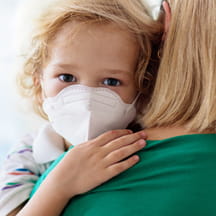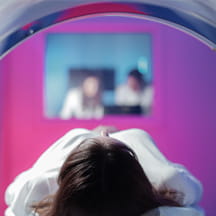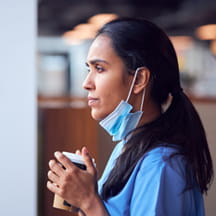Health care agencies around the globe, including the World Health Organization (WHO) and the Centers for Disease Control and Prevention (CDC), are closely monitoring the outbreak of a respiratory disease caused by a novel coronavirus that was first detected in Wuhan, China. As of March 11, the WHO confirmed more than 118,000 cases of the disease (named "coronavirus disease 2019," or "COVID-19") worldwide, resulting in more than 4,000 deaths. The virus is present in 114 countries, and health care organizations across the U.S. have heightened preventive measures to curb the spread of the disease in this country.
Children's Hospitals Today caught up with Mohammad Mhaissen, M.D., medical director of infectious diseases at Valley Children's Healthcare in Madera, California, to discuss the steps he and his team are taking against the COVID-19 outbreak and what other children's hospitals can do to remain vigilant.
What are you and your team doing now to prevent the spread of COVID-19?
We're following the lead of the CDC and the Department of Public Health in California. Everything we're doing is within the guidelines they've sent us.
The guideline now is for clinicians to ask anyone who comes into our facilities a series of screening questions:
- Have they been to China? And not necessarily just Wuhan, but anywhere in China.
- Do they have any symptoms of respiratory infection—fever, cough or difficulty breathing?
- Have they been exposed to anyone with a confirmed or suspected case of the 2019 coronavirus?
We also have security officers that ask anyone who comes through the doors these questions. And in the emergency department (ED), our triage nurses are doing the same thing.
What is the protocol for treating a patient who answers the screening questions in the affirmative?
Once someone answers "yes" to the screening questions, we consider them a "person under investigation" (PUI). That person—along with any people accompanying them—are moved to a private room and given a mask to wear. All the staff caring for them are wearing protective equipment as well.
Once we have them in a private room, our infection prevention team contacts the local health department, and we begin the process of screening and testing. They're requesting we obtain a respiratory specimen with a nasopharyngeal swab. The other specimen they ask for is a blood specimen with the antibodies—or even the genome—of this virus. If the patient is intubated, we can get a deeper specimen from the lower airways. From there, we'll send the samples to one of 16 laboratories in California that can screen and identify this virus.
How are you advising your patients who have traveled—or are planning travel—to China?
We're asking all people who are coming from China to watch for symptoms and be careful with potential exposure to others. And if they feel any symptoms consistent with the coronavirus infection to reach out to their doctor right away to get screened.
For those planning travel, we're following the lead of the CDC in saying that all travel to China should be avoided if possible. Unless someone has a very critical and necessary trip, they shouldn't travel to China right now.
How do your preparations for coronavirus align with efforts to curb the spread of influenza and other viruses?
Influenza this year is probably as bad as last year, and last year's influenza season was the worst we've seen since the H1N1 epidemic in 2009. This has also been a bad year for RSV. The same measures that can prevent someone from spreading coronavirus can be used to prevent the spread of the other respiratory viruses that we see day-to-day, like influenza—proper hand hygiene, not mingling with someone who has symptoms, keeping children home from daycare or school if they have symptoms and following standard hygiene practices in general.
It's important to be vigilant for these infections that can be prevented and not necessarily get hung up and focus on the newer virus. We shouldn't forget about the real threats that we deal with on a day-to-day basis—specifically RSV for children less than 3 years old and influenza for everyone.
There is interest now in finding out about coronavirus, but this is a golden opportunity for health care staff to educate the public about the risk of respiratory infections in general.


